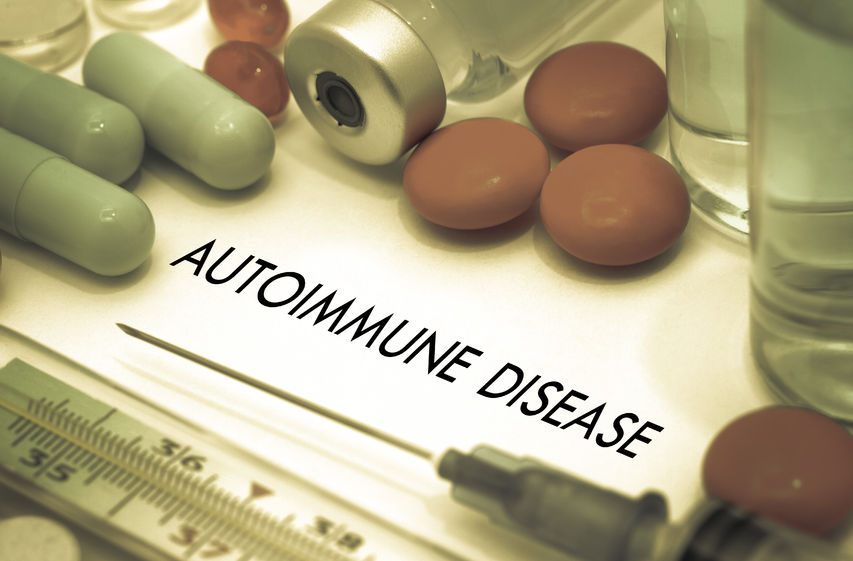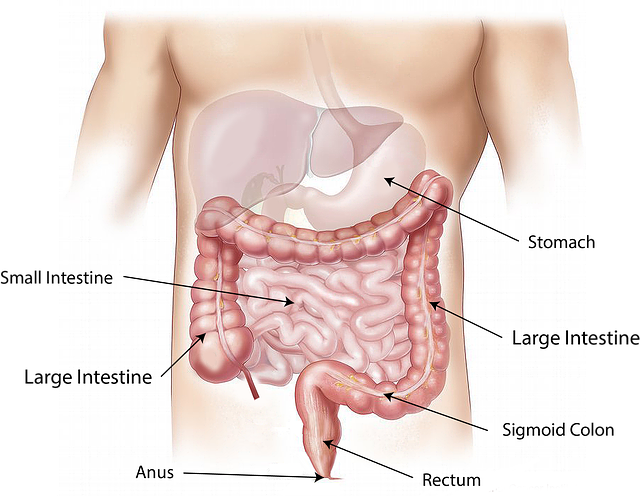What Are Celiac Disease Signs and Symptoms?
Receive a free 50+ page guide with gut rebuilding recipes and tips from 45 wellness experts, courtesy of gut health expert Summer Bock. Also check out her Better Belly Project 2.0.
The variety of celiac disease signs and symptoms is almost unbelievable, and they mimic the signs and symptoms of many other diseases. Some are gastrointestinal (GI), while others are extraintestinal (meaning in parts of the body outside of the GI tract).
According to the National Foundation for Celiac Awareness (NFCA):
There are more than 300 symptoms of celiac disease, and symptoms may vary among different people.
One person might have diarrhea and abdominal pain, while another person has irritability or depression. Some patients develop celiac symptoms early in life, while others feel healthy far into adulthood. Some people with celiac disease have no signs or symptoms. (1)
At the end of the article is a list of complications from untreated celiac disease. In a sense, these can be the most serious celiac disease signs that progress over time.
A point of clarification: A symptom is subjective and sensed only by the patient. Examples include fatigue, a minor headache or stomachache, or a feeling of fullness too soon into eating (called “early satiety”).
A sign is something obvious that others can observe, such as blood in the stool, a skin rash, or tooth discoloration. Abnormal test results are also signs of disease.
Most people just use the word “symptom” to cover both signs and symptoms. Doctors and other healthcare professionals are most likely to make the distinction between the two terms.
Why Are Celiac Disease Symptoms So Varied?
According to the National Institute of Diabetes and Digestive and Kidney Diseases (NIDDK), researchers are finding that the following factors can play a role in the onset and variability of celiac disease signs and symptoms: (2)
- The length of time a celiac patient was breastfed
- The age a person began consuming gluten-containing foods
- The quantity of gluten-containing foods a person consumes
For example, breastfeeding appears to be protective against celiac disease because the longer a person was breastfed, the later in life symptoms appear.
NIDDK also states that: “Symptoms also vary depending on a person's age and the degree of damage to the small intestine. Many adults have the disease for a decade or more before they are diagnosed. The longer a person goes undiagnosed and untreated, the greater the chance of developing long-term complications.” (2)
A Study That Demonstrates the Variability of Celiac Disease Signs and Symptoms
The following study demonstrates the variability of celiac disease signs and symptoms, as well as the finding that most celiacs have non-classical celiac disease, a form of the disease that presents without the signs and symptoms of malabsorption.
Over a 15-year period in one hospital in Bologna, Italy, 770 patients were diagnosed with celiac disease. In the 610 symptomatic patients (79%), those with non-classical celiac disease outnumbered patients with classical celiac disease (66% versus 34%).
The classical symptom of diarrhea was found in 27% of patients. Non-classical symptoms of the GI tract included “bloating (20%), aphthous stomatitis [canker sores or mouth ulcers] (18%), alternating bowel habit (15%), constipation (13%), and gastroesophageal reflux disease [GERD] (12%).”
Moreover, “Extraintestinal manifestations included osteopenia/osteoporosis (52%), anemia (34%), cryptogenic hypertransaminasemia [elevation of a certain group of liver enzymes] (29%), and recurrent miscarriages (12%).” (3)
Short List of Celiac Disease Signs and Symptoms
A short list of celiac disease signs and symptoms includes diarrhea, constipation, abdominal pain, indigestion, bloating, gastroesophageal reflux disease (GERD), and other GI complaints.
Some people with celiac disease have no GI symptoms, although they have positive blood tests and small intestinal damage characteristic of celiac disease.
Some of the signs and symptoms of celiac disease that can occur outside of the GI system include chronic fatigue, iron deficiency anemia, unexplained weight loss, infertility, osteoporosis, and depression.
Long List of Celiac Disease Signs and Symptoms
Here's a long list of celiac disease signs and symptoms, grouped by category and compiled from a variety of reputable sources.
Gastrointestinal Signs and Symptoms:

- Abdominal pain
- Anorexia
- Belching
- Bloating (also called abdominal distention)
- Chronic constipation
- Chronic or recurrent diarrhea
- Edema (fluid retention) in the ankles and lower legs due to low blood protein levels
- Flatulence
- Food intolerances
- Gas
- Gastritis
- Gastroesophageal reflux disease (GERD)
- Gut dysbiosis (imbalance in the gut flora)
- Heartburn (acid reflux)
- Indigestion
- Intestinal inflammation and swelling (different from gas-related bloating)
- Irritable bowel syndrome (IBS)
- Lactose intolerance
- Leaky gut (increased intestinal permeability)
- Loss of appetite
- Nausea
- Pale, foul-smelling stool
- Rumbling sound made by the movement of gas in the intestines (borborygmus)
- Swollen belly (especially observed in infants and young children)
- Vomiting
- Weight gain (many celiacs are overweight, even obese)
- Weight loss, significant and unexplained
Malabsorption/Deficiency Signs and Symptoms:
- Failure to thrive (in children)
- Fat malabsorption (steatorrhea)
- IgA deficiency
- Iron-deficiency anemia that does not respond to iron supplementation
- Malnutrition
- Night blindness and dry eyes (due to vitamin A deficiency)
- Protein malabsorption
- Short stature (in children)
- Vitamin and mineral deficiencies, including: low iron, vitamin B9 (folate), vitamin B12, vitamin D, calcium, magnesium
Musculoskeletal Signs and Symptoms:
- Arthritis
- Bone pain
- Fibromyalgia
- Joint pain, inflammation, stiffness, or swelling
- Loss of coordination of the muscles, especially of the extremities (ataxia)
- Muscle pain
- Muscle wasting
- Osteopenia (low bone density)
- Osteoporosis (a more serious low bone density disease)
- Short stature (in children)
Neurological and Behavioral Signs and Symptoms:
- Attention deficit disorder (ADD)
- Attention deficit hyperactivity disorder (ADHD)
- Anxiety
- Balance issues (for example, you feel a bit unsteady when standing or you're stumbling more often)
- Brain fog (can't think straight, forgetfulness)
- Depression
- Developmental delays
- Headaches
- Irritability
- Learning disabilities
- Migraines
- Psychiatric syndromes
- Seizures
- Tingling and/or numbness in the hands, legs, or feet (peripheral neuropathy)
Oral Signs and Symptoms:
- Bald tongue (atrophic glossitis), characterized by a red, smooth, shiny tongue that occurs when a large number of papillae are lost)
- Canker sores or ulcers inside the mouth, recurrent (aphthous stomatitis)
- Cavities
- Dental enamel defects (tooth discoloration—white, yellow, or brown spots on the teeth, poor enamel formation, pitting or banding of teeth, and mottled or translucent-looking teeth)
- Dry mouth syndrome
- Squamous cell carcinoma—a type of cancer—of the pharynx and mouth
Other Signs and Symptoms:
- Chronic fatigue
- Malaise
- Liver and biliary tract disorders
- Liver enzymes elevated
- Pancreatitis (inflammation of the pancreas)
- Spleen, reduced functioning of (hyposplenism)
Reproductive Signs and Symptoms:
- Delayed first menstrual cycle (menarche) and menstrual abnormalities in girls
- Delayed puberty in boys
- Early menopause
- Infertility in women
- Miscarriage, recurrent
- Missed menstrual periods
Skin Signs and Symptoms:
- Acne
- Chronic hives (urticaria)
- Eczema
- Itchy skin rash called dermatitis herpetiformis (DH)
- Loss of hair from the head or body (alopecia)
Conditions Associated With Celiac Disease:
Autoimmune diseases (in addition to celiac disease) occur 3 to 10 times more often in people with celiac disease than in the general population. (3) Autoimmune diseases associated with celiac disease include the following:
- Addison's disease (autoimmune disease of the adrenal glands)
- Autoimmune liver disease
- Autoimmune myocarditis
- Hashimoto's thyroiditis (autoimmune thyroid disease) (prevalence of celiac disease is about 2%–4%)
- Rheumatoid arthritis
- Sjögren's syndrome (an autoimmune disease with systemic manifestations including arthritis, fever, fatigue, and mucosal dryness, such as dry eyes and dry mouth) (prevalence of celiac disease is about 5%)
- Type 1 diabetes (prevalence of celiac disease is about 6%)
Other conditions associated with celiac disease include the following:
- Asthma
- Down Syndrome (prevalence of celiac disease is 5%–12%)
- Epilepsy
- Fibromyalgia
- Idiopathic dilated cardiomyopathy
- Osteoporosis
- Selective IgA deficiency (prevalence of celiac disease if about 2%–10%)
- Turner Syndrome (prevalence of celiac disease is about 3%)
- Williams syndrome (prevalence of celiac disease is 3%–10%)
Possible Complications of Untreated Celiac Disease
As of a study published in 2007, only 3%–5% of individuals with celiac disease are diagnosed in the United States. That means that a lot of people with untreated celiac disease are walking around having no idea of the serious and potentially fatal consequences ahead of them—unless they get diagnosed and begin a gluten-free diet. (4)
According to the NCBI Bookshelf report on celiac disease, “Overall, persons with untreated or unresponsive celiac disease have increased early mortality compared to the general population, mainly because of the higher rate of malignancies. This risk is highest in the year after initial diagnosis, likely because of a prolonged period of unrecognized symptoms associated with celiac disease.”
The following lists the possible complications of untreated celiac disease (the first four are types of cancer):
- High grade T-cell lymphoma of the small intestine
- Adenocarcinoma of the small intestine
- Esophageal and oropharyngeal squamous carcinoma
- Non-Hodgkin's lymphoma
- Development of secondary autoimmune diseases
- Osteoporosis
- Pancreatic exocrine insufficiency
References
1. Celiac disease symptoms list. Beyond Celiac. [Article]
2. Symptoms and causes of celiac disease. National Institute of Diabetes and Digestive and Kidney Diseases (NIDDK). Jun 2016. [Article]
3. Pagon RA, Adam MP, Ardinger HH, et al., editors. Celiac Disease. GeneReviews® [Internet]. Seattle (WA): University of Washington, Seattle; 1993–2016. [Chapter]
4. Collin P, Huhtala H, Virta L, Kekkonen L, Reunala T. Diagnosis of celiac disease in clinical practice: physician’s alertness to the condition is essential. J Clin Gastroenterol. 2007;41:152–156. [Abstract]
Sources for Celiac Disease Signs and Symptoms
Celiac Disease Awareness Campaign of the National Institutes of Health
Celiac Disease Foundation
Children's Hospital of Chicago
GeneReviews® from the University of Washington, Seattle
Mayo Clinic
Beyond Celiac (formerly National Foundation for Celiac Awareness (NFCA))
National Institute of Diabetes and Digestive and Kidney Diseases (NIDDK)
Prevention.com
Southern Arizona Celiac Support
University of Chicago Celiac Disease Center
World Gastroenterology Organisation
CeliacFAQ.com home page > Celiac Disease FAQ > What Are Celiac Disease Signs and Symptoms?


